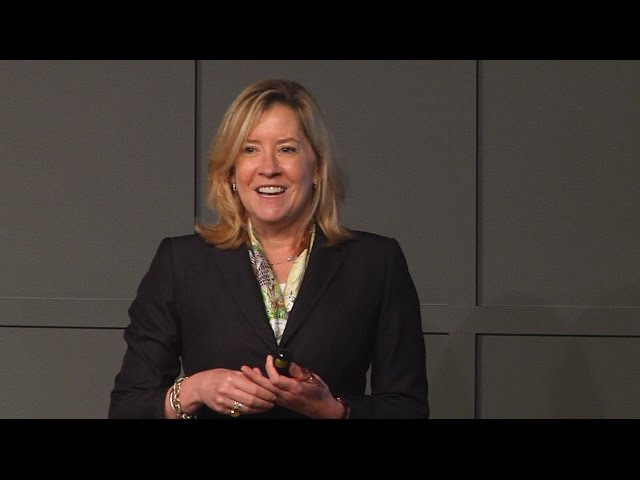“Education’s purpose is to replace an empty mind with an open one.”
But Malcolm Forbes's famous admonition holds no brief in Trumpworld
Talk about a baptism by fire. Only a week into his job as president of the sprawling University of California system, James (J.B.) Milliken, has been plunged into a risky battle with Donald J. Trump. Milliken has had to be unequivocal about a $1 billion extortion demand Trump’s minions are trying to impose on UCLA, one of the pillars of the 10-campus system.
“As a public university, we are stewards of taxpayer resources and a payment of this scale would completely devastate our country’s greatest public university system as well as inflict great harm on our students and all Californians,” said Milliken, a son and grandson of small-town Nebraska bankers. “Americans across this great nation rely on the vital work of UCLA and the UC system for technologies and medical therapies that save lives, grow the U.S. economy, and protect our national security.”
Ostensibly, the federal demand is being made to settle claims that university officials tolerated antisemitism in demonstrations against the Gaza War in the 2023-24 academic year and that its diversity polices breached anti-discrimination laws. The demand is being accompanied by requirements for policy changes dealing with admissions and gender identity in sports and housing, as well as the abolition of scholarships for racial or ethnic groups.
In fact, however, the diktat is the biggest yet in a campaign inspired by authors of a Project 2025 effort, Project Esther, which nominally targets antisemitism on campuses, but more broadly assaults “wokeism” in the academic world. The project was developed largely by Victoria Coates, a former deputy national security adviser to Trump and vice president at The Heritage Foundation. Coates, a self-described committed Christian, holds three degrees in Italian Renaissance art history, and planned on an academic career until she grew alienated by what she called a “very noxious anti-Western worldview” at her alma mater, the University of Pennsylvania, according to The New York Times.
The $1 billion demand ratchets up the stakes in the longstanding Trumpist and Heritage Foundation assault on major universities. The administration forced Columbia University into a $200 million deal and Brown University into a $50 million settlement. Negotiations are under way for a resolution with Harvard, with a $500 million figure being bandied about. Still more extortions could well be in store from other schools under the gun by Trump.
But these deals beg several enormous questions. How will extracting the hefty sums of cash advance education at these schools, for instance? Sure, policy changes that could include cuts in pro-Palestinian academic departments could help foster a balance in curricular offerings, but does cutting diversity efforts have anything but a negative impact? If the administration truly aimed to improve higher education, wouldn’t it be making more money available, perhaps supporting educational efforts more sympathetic to Israel, not imposing brutal penalties?
Already, the University of California has overhauled practices in some areas called for by the Trump administration — including a ban on protest encampments and the abolition of diversity statements in hiring, as the Los Angeles Times reported. So, why does Trump want to humble the system financially? What really underlays his animus toward these schools?
Certainly, part of this must be longstanding Republican animosity to California and perhaps to the likelihood that Democratic Gov. Gavin Newsom could be a presidential candidate in the 2028 election. The $1 billion proposal came just a day after Newsom said UC should not bend “on their knees” to President Trump, as the other schools have.
“We’re not Brown, we’re not Columbia, and I’m not going to be governor if we act like that,” Newsom said. “Period. Full stop. I will fight like hell to make sure that doesn’t happen.”
Even more personally, however, one must wonder at the motivations of a disgruntled former academic such as Coates, or of the middling transfer student into Penn’s Wharton School, Trump. Are they driven by grudges, by a need to punish those by whom they feel wronged or who shunned them? Recall that one of Trump’s former professors called him “the dumbest goddamn student I ever had.” Certainly, the rarely articulate Trump’s feelings about schooling are clear from his plans to eliminate the Department of Education.
Explorations of Trump’s motivations are legion. Perhaps one of the best, however, is a new offering by The New Yorker’s David Remnick. As a child, Remnick writes, “Little Donny” was “a pigtail puller, an unruly loudmouth who tormented his teachers and hurled insults and rocks at other kids. When Trump was thirteen, his father, Fred, shipped him off to a military school, in Cornwall, New York.” There, “Trump made it plain that his delight in domination was the immutable core of him.”
Remnick tells us that Marc Fisher, who co-authored “Trump Revealed,” an early biography and character analysis, once told PBS that, as a cadet, Trump “used a broomstick as a weapon against classmates who didn’t listen to him when he told them what to do. He was in part enforcing the rules of the academy, but he was equally so enforcing the rules of Donald Trump.”
There’s no doubt that Trump exults in having powerful people and institutions quake at his feet. “They’re all bending and saying, ‘Sir, thank you very much,’ ” he bragged, after certain law firms started making their pitiful arrangements with the White House. “They’re just saying, ‘Where do I sign?’”
But, even beyond Trump’s need to force schools to quiver before him, other worrisome trends may cloud our national future long after the would-be tyrant is gone. Where we were once a country that built great universities — private and public — because we realized they were essential to national growth, much popular sentiment now is against expansion — at least as shown by rightist politicians who reflect at least some public feeling. Hostility to higher education is widespread.
California may be case study No. 1. Growth was long the mainstay of the system, which now serves more than 295,000 students. Before he landed in the cauldron he’s now in, Milliken ran other university systems, getting an early start as president of the University of Nebraska, from which he had graduated in 1979. When he led the NU system, from 2004 to 2014, the university was punching far above its weight, so much so that its flagship campus in Lincoln joined the Big Ten athletic and academic conference in 2011.
Milliken, a lawyer, got his post at Nebraska in part because he had worked as the legislative assistant to an influential Republican congresswoman from the state, Virginia D. Smith, the only woman to serve in the House from the state. Republicans such as Smith had long championed higher education and she served on the House Education Committee.
Enthusiastic backing for higher education among Nebraska Republicans for decades allowed officials to build a university where nearly 50,000 students now attend, most hailing from a statewide population barely topping 2 million. Without such crucial support, the school’s flagship campus in Lincoln could never be good enough to rub shoulders with the likes of the University of Michigan, Northwestern, the University of Southern California and Rutgers in the Big Ten.
And yet, some MAGA-inspired state leaders today are now pulling in their horns in ways that threaten the university’s health and prospects. At the flagship campus alone, legislative trims are forcing the chancellor to direct officials to come up with $27.5 million in cuts to a $1.67 billion budget for the coming year, atop several years of smaller budget trims. Thus, the campus and the university overall are offering deals for veteran tenured faculty to quit early, a move that will reduce the school’s vitality, and officials may shrink or consolidate departments that took decades to build.
"I suspect there will be programs, majors, units, departments, all of those things will change,” said journalism professor and faculty senate president John Shrader, a former colleague of mine in UNL’s journalism school. He said the faculty expected some cuts, but the sheer scale—$27.5 million compared to last year's $5 million—is staggering. “Not one part of this campus will be unaffected.”
Oh, how times have changed. Some time ago, I was privileged to write a biography of an influential Republican leader, Clayton Yeutter, a Nebraska-born statesman who headed the Republican National Committee along with taking on many other crucial government roles. When Yeutter testified at his confirmation hearing to become the U.S. Secretary of Agriculture in 1989, he spoke passionately about the importance of education.
“We should not aspire to competing with the rest of the world on wage rates, in agriculture or anywhere else,” Yeutter argued. “We must compete on the basis of technology, innovation, entrepreneurship, creativity, institutional flexibility and personal and institutional freedoms. All those are built on education!”
Certainly, Yeutter knew first-hand about the power of schooling. His training at the University of Nebraska, from his undergraduate years through a law degree and doctorate in agricultural economics, lifted him from the life as the son of a small-town immigrant farmer into some of the nation’s most important jobs. Along with Ag Secretary and RNC head, he served as Ronald Reagan’s U.S. Trade Representative, where he opened the U.S. and the world to freer global trade.
Long before his Washington achievements, however, as a governor’s top aide he had championed funding for the University of Nebraska. His efforts laid the groundwork for the school to expand into its current four-campus system, which now includes membership in the Big Ten for its flagship campus.
The growth in the NU system has been breathtaking. The system’s nearly 50,000 students, spread across Lincoln and campuses in Kearney and Omaha, are a far cry from the fewer than 7,000 when Yeutter graduated in 1952. The university’s growth far outstrips gains in the state’s population, which was below 1.37 million in Yeutter’s time and still barely tops 2 million.
No doubt that story has been echoed all around the country, at least in states where education has been a priority. At least for now, however, the era of growth has been brought to a grinding halt by today’s Republicans. Will they or their successors someday look back on this time with shame, seeing it as a period when they shortchanged the nation?
One can only hope that Milliken and his like can prevail or, at least, show up the Trumpist forces for the damage they are causing and its effect on our young. As a Nebraskan might say, the seed corn must be kept healthy. Today, it’s at great risk.





